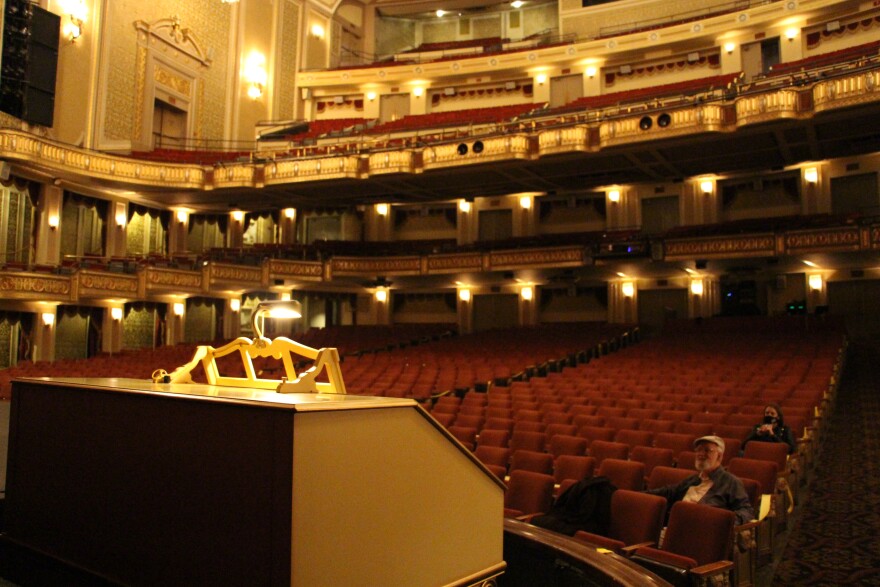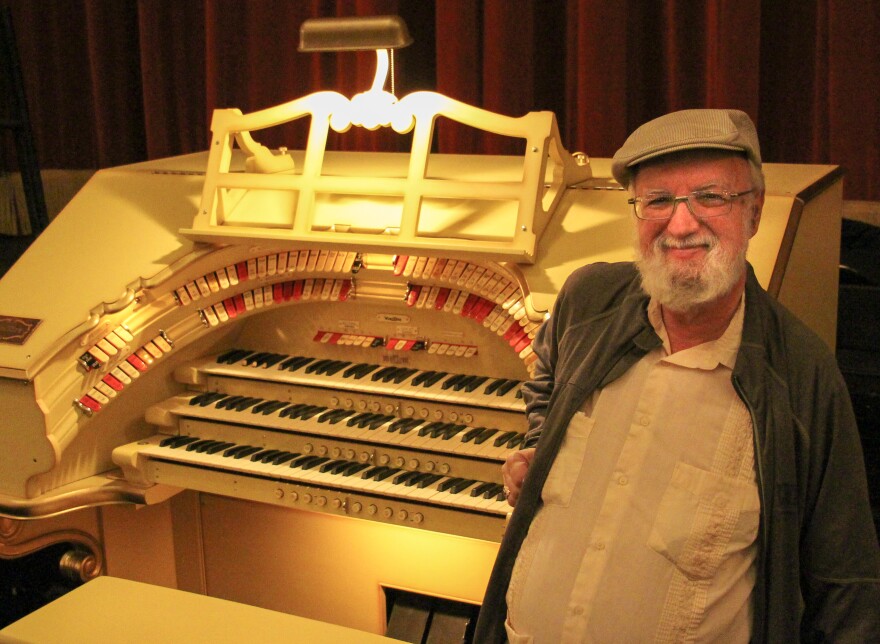Look up silent movies on the internet and you'll find plenty of videos set to jangly piano music. But in 1928, when the Orpheum Theatre in Memphis re-opened its doors to the public after a fire destroyed the original structure, audiences were treated to first-run silent films accompanied by majestic overtures played on a "Mighty Wurlitzer" organ.
After a two-year restoration in Chicago, the instrument is now back home and ready for the ear test. On Thursday, long-time Orpheum organists Tony Thomas and Vincent Astor will perform a concert to a limited audience, already fully booked due to pandemic restrictions.

Orpheum President and CEO Brett Batterson has indicated that the Wurlitzer will receive a larger reception post-pandemic.
The 1910s and '20s were boom times for theater-building in America, and the Rudolph Wurlitzer Company in upstate New York began mass producing the theater organs, also called Unit Orchestras, to serve the needs of the burgeoning film industry and also add musical color to traveling Vaudeville variety shows. A single organist could do the work of a nine-piece band.
"A theater with an organ in it takes one organist and you have a show," Astor says. "Anybody who's listening is immediately impressed. One person, one instrument."
Unlike traditional church organs, a Wurlitzer's electro-pneumatic system allowed the keyboard console to be located apart from the pipes themselves -- connected by wires, not levers or "trackers". In the Orpheum, the organ console sits on an elevator lift under the stage and is raised up for performances. The pipes are hidden behind drapes just over the balconies nearest the stage.
Like a church organ, the pipes can imitate various instruments such as strings, brass and woodwinds. But there are also various percussion instruments built into the system.
"Being a theater organ, it has many sound effects," Astor says. "Theater organs are full of bells and whistles."
A combination of effects can immitate a locomotive leaving the station, or a jalopy with an ooga horn. And back when chugging trains and rattling Model Ts were the main sources of mobility, the Wurlitzer could help make them jump off the screen.
"One of their marketing people came up with the term 'Mighty Wurlitzer,' and it stuck, "Astor says.
In the year before the Great Depression, the Orpheum paid $19,000 for its Wurlitzer, which might be about $300,000 in today's currency. The recent restoration cost about a half-million dollars. Astor, who wrote the first check, said the need was urgent.
"It was worn out. Taped together and Band-aids and solder and bailing wire and chewing gum," Astor says.
It spent two years being restored by JL Weiler in Chicago. One improvement that Astor says makes the renovation sound better than before was reducing the size of the pipe chambers. Now, more sound is directed out into the theater.

Tony Thomas, a theater organ enthusiast who has been playing the Orpheum's Wurlitzer since the 1970s, says that for all its pomp and circumstance, a Wurlitzer can be quite ethereal. He demonstrates by playing a theme from the "Harry Potter" movies on one of its built-in instruments, the celesta.
By adding and substracting instruments, the organ allows the player to compose on the fly.
"It's really more like orchestrating," Thomas says. "The very best pipe organists know how to shade very subtly by changing the palette of the tones."
With that, Thomas performs a rousing "76 Trombones," creating the sound of a full marching band from the ten fingers of a single music man.



